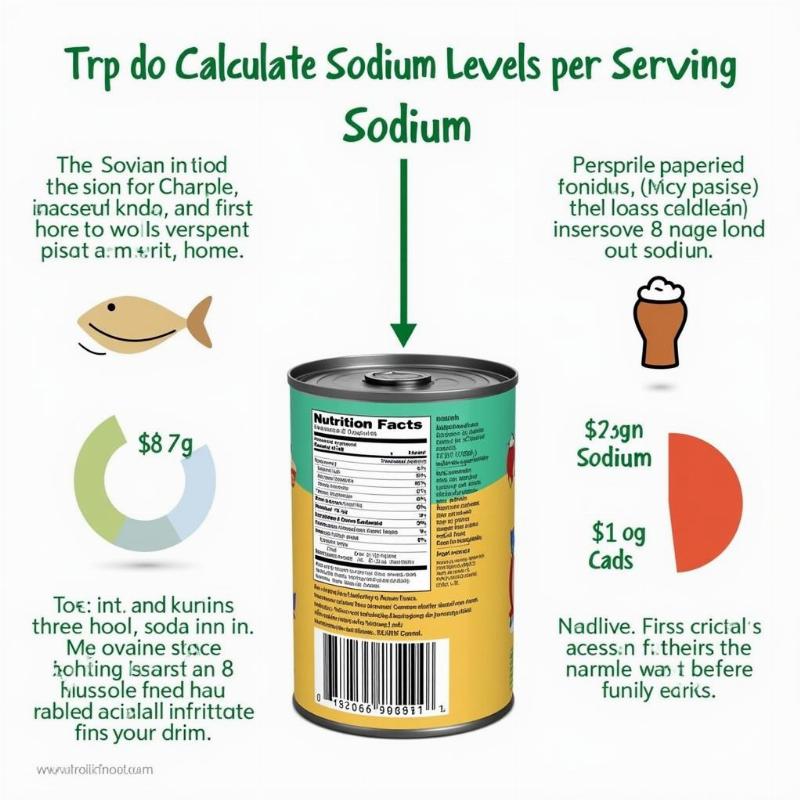Low sodium wet dog food is an increasingly popular choice for pet parents concerned about their dog’s health, especially those with certain medical conditions. This article delves into the benefits, considerations, and best practices for choosing and incorporating low sodium wet food into your dog’s diet. We’ll explore why it’s important, what to look for, and how to transition your furry friend to this healthier option.
Understanding the Need for Low Sodium Wet Dog Food
Just like humans, excessive sodium intake can be detrimental to a dog’s health. Too much salt can exacerbate existing conditions like heart disease, kidney problems, and high blood pressure. Low sodium wet dog food can be a crucial part of managing these health issues, improving quality of life, and potentially extending lifespan. For dogs with specific dietary restrictions, consulting a veterinarian is vital. They can recommend appropriate low-sodium diets and ensure the food meets all your dog’s nutritional needs.
Many commercial dog foods, especially dry kibble, contain high levels of sodium for palatability and preservation. Wet food generally has lower sodium content than dry food, making it a better starting point for a low-sodium diet. However, it’s crucial to carefully check labels and choose brands specifically formulated for low sodium content.
Choosing the Right Low Sodium Wet Dog Food for Your Dog
Selecting the right low sodium wet food involves more than just checking the sodium content. Look for foods that are complete and balanced, meaning they meet the Association of American Feed Control Officials (AAFCO) nutritional guidelines. Consider your dog’s age, breed, activity level, and any specific dietary needs or allergies.
 How to Read Dog Food Labels for Sodium Content
How to Read Dog Food Labels for Sodium Content
Here’s what to look for on the label:
- Sodium Content: Aim for less than 100mg of sodium per 100kcal.
- Ingredients: Prioritize whole meat sources, vegetables, and fruits. Avoid artificial flavors, colors, and preservatives.
- AAFCO Statement: Ensure the food meets AAFCO standards for complete and balanced nutrition.
- Specific Health Considerations: Look for formulations tailored to any health issues your dog may have, such as kidney disease or allergies.
Transitioning Your Dog to Low Sodium Wet Food
Switching your dog to a new food, even a healthier option, should be done gradually to avoid digestive upset. Start by mixing a small amount of the new low sodium wet food with their current food. Gradually increase the proportion of the new food over a week or two until they are fully transitioned.
Monitor your dog for any changes in appetite, stool, or overall health during the transition. If you notice any adverse reactions, consult your veterinarian. They can help determine if the new food is suitable or if adjustments need to be made. Remember, a balanced diet, regular exercise, and routine veterinary checkups are essential for your dog’s overall health and well-being.
Conclusion
Choosing low sodium wet dog food is a proactive step towards ensuring your dog’s long-term health. By carefully selecting a complete and balanced formula and transitioning your dog gradually, you can help them thrive while managing sodium intake. Always consult your veterinarian for personalized dietary recommendations based on your dog’s individual needs. Don’t hesitate to reach out to a vet nutritionist for expert advice on tailoring a low-sodium diet to your furry friend.
FAQ
-
Why is low sodium important for dogs? Excessive sodium can contribute to health problems like heart disease and kidney issues.
-
How do I know if my dog needs low sodium food? Consult your veterinarian for a proper diagnosis and dietary recommendations.
-
Can all dogs eat low sodium food? Not necessarily. Some dogs with specific health conditions might require different dietary adjustments. Always consult your veterinarian.
-
What are the signs of sodium sensitivity in dogs? Increased thirst, frequent urination, and swelling might be indicative of sodium sensitivity. However, a veterinarian should be consulted for accurate diagnosis.
-
Is dry or wet food better for a low sodium diet? Wet food generally has lower sodium content than dry kibble.
-
How can I make my dog’s low sodium diet more appealing? Try adding a small amount of dog-safe, low-sodium toppings like cooked chicken or vegetables.
-
What should I do if my dog refuses to eat low sodium food? Consult your veterinarian for advice on transitioning strategies or alternative low-sodium options.
Beautdogs.us is your trusted source for all things dog-related. We offer comprehensive guides on dog breeds, care, and products. Whether you’re a seasoned pet owner or just starting your journey with a furry companion, Beautdogs.us is here to help. Contact us today at [email protected] or +1 501-555-7529 for expert advice and personalized recommendations.